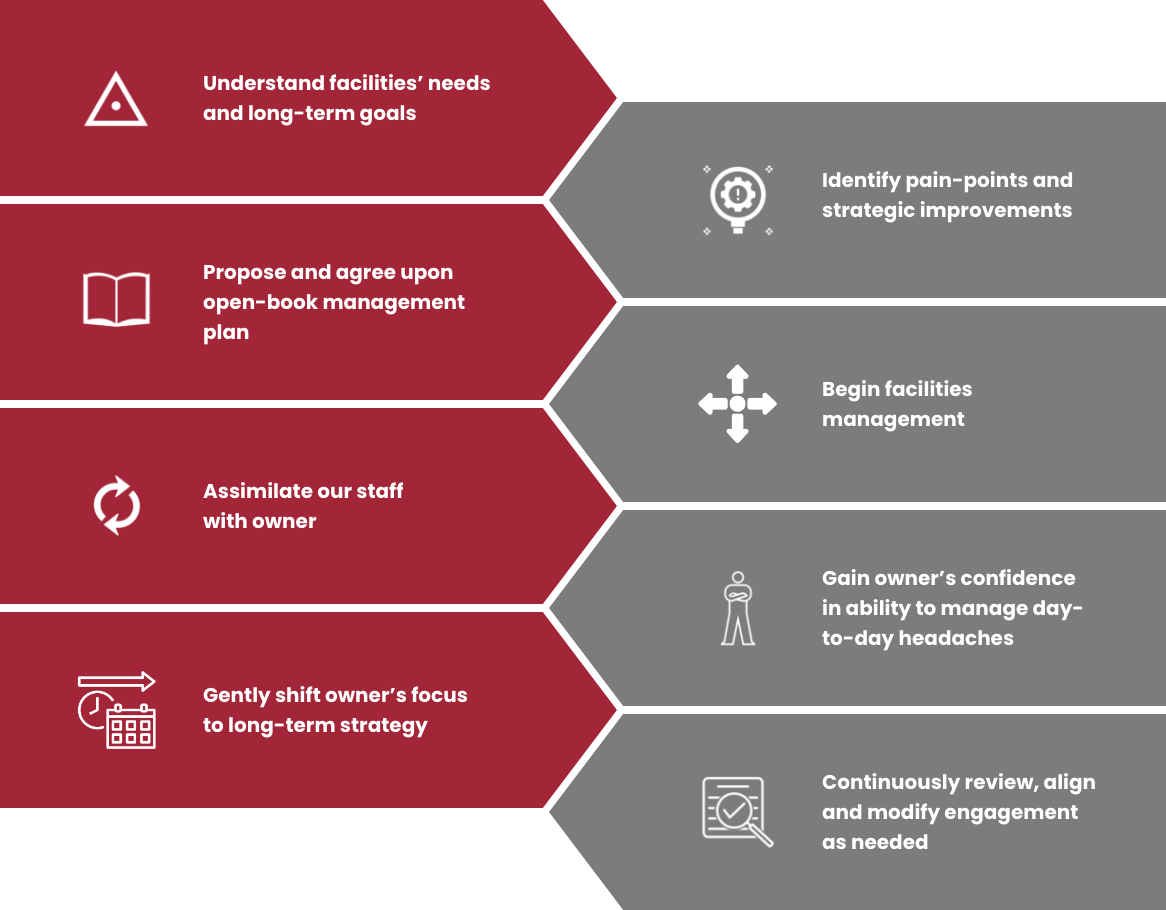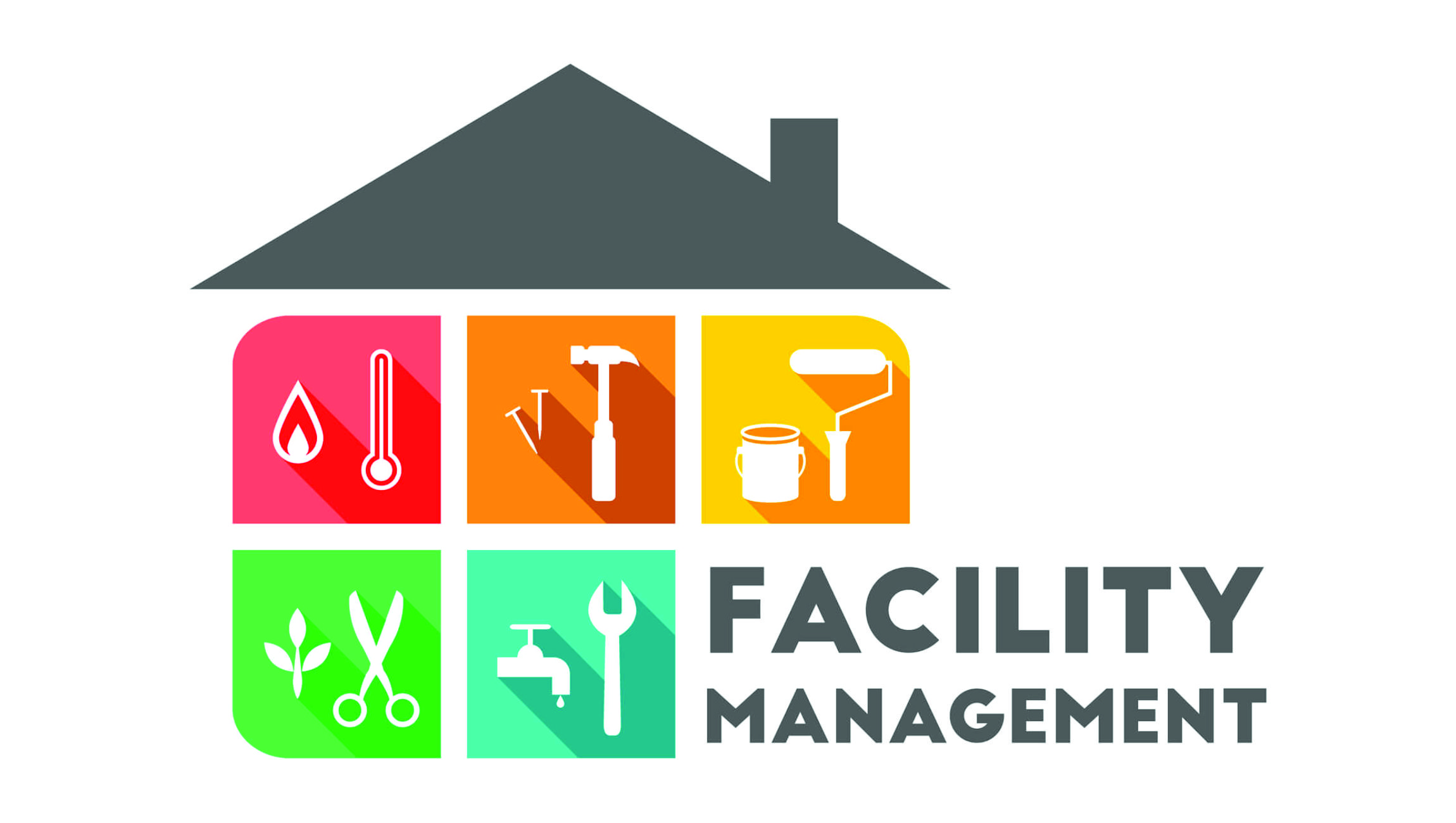Facility Management Solutions-- Ensuring Safety and Maintenance
Facility Management Solutions-- Ensuring Safety and Maintenance
Blog Article
Secret Trends Forming the Future of Center Administration in 2024
As we look ahead to 2024, the landscape of center administration is poised for significant transformation, driven by numerous crucial patterns. The integration of clever structure innovations and a shift in the direction of data-driven decision-making pledge to improve operational efficiency while prioritizing sustainability in practice.
Smart Building Technologies

Smart structure innovations encompass a vast selection of systems, including intelligent illumination, a/c controls, and safety and security systems. By integrating these systems, center managers can keep track of and readjust specifications in real-time, leading to substantial reductions in power waste and functional prices. For example, wise sensors can spot occupancy levels and adjust lighting and temperature as necessary, making sure that energy is only utilized when required.
Moreover, these modern technologies facilitate boosted data collection, allowing organizations to track use patterns and determine possibilities for further renovations. The implementation of wise building innovations not only contributes to sustainability objectives yet likewise produces healthier workplace that can enhance worker efficiency and fulfillment.
As we move into 2024, the adoption of clever building innovations will likely speed up, reflecting a broader change towards even more smart, receptive, and sustainable facility administration methods.
Data-Driven Decision Making
Significantly, organizations are leveraging data-driven choice making to improve facility monitoring methods. By utilizing data analytics, facility supervisors can obtain actionable insights that substantially boost functional efficiency and source allotment. The combination of sophisticated modern technologies, such as IoT sensing units and real-time surveillance systems, allows the collection of huge amounts of information on structure efficiency, tenancy prices, and power consumption.
This wealth of information allows facility managers to identify trends, predict maintenance requirements, and proactively address concerns prior to they escalate. As an example, predictive analytics can anticipate devices failures, decreasing downtime and repair service expenses. In addition, data visualization devices facilitate much better interaction amongst stakeholders, making sure that educated choices are made collaboratively.
Additionally, data-driven methods improve strategic preparation by making it possible for center managers to evaluate the effectiveness of existing techniques and make notified choices regarding financial investments in innovation or facilities. As companies significantly focus on operational quality, data-driven choice making is poised to end up being a cornerstone of effective center management strategies in 2024 and past. Eventually, the capability to take advantage of data properly will equip organizations to develop a lot more reliable, effective, and resistant centers.
Sustainability and Eco-friendly Practices
The focus on data-driven choice making naturally aligns with the expanding concentrate on sustainability and eco-friendly methods within facility administration. As organizations increasingly prioritize ecological duty, facility supervisors are leveraging analytics to optimize source usage, minimize waste, and lessen carbon impacts. This calculated method makes it possible for the combination of energy-efficient systems, such as LED lights, wise cooling and heating controls, and sustainable power sources right into facility procedures.
Moreover, the application of lasting practices expands beyond energy intake. Center supervisors are embracing environment-friendly products and promoting reusing initiatives to create a round economic situation within their facilities. This not just boosts the environmental profile of the company but likewise cultivates a society of sustainability among workers.
Conformity with ecological regulations is one more essential aspect driving the adoption of eco-friendly methods. By making use of data analytics, facility managers can keep an eye on conformity metrics and recognize locations for improvement, guaranteeing adherence to global and local sustainability standards.
Hybrid Work Designs
A considerable change in the direction of crossbreed job models is reshaping the that site landscape of facility management in 2024. This paradigm combines in-office and remote job, demanding a reevaluation of room utilization, resource allocation, and employee engagement methods. Organizations are increasingly acknowledging the importance of versatile workspaces that cater to diverse needs and preferences.
Center supervisors must adjust by implementing flexible workplace designs that sustain joint initiatives while offering locations for focused work. This consists of the integration of innovation to promote seamless interaction and cooperation among in-office and remote staff members. Smart building options, equipped with sensors and analytics, permit real-time monitoring of area use, enabling organizations to enhance their settings efficiently.
Additionally, crossbreed job models emphasize the demand for effective facility monitoring that focuses on employee experience. This encompasses not only innovation and room design but also Our site the development of policies that promote a balanced work-life dynamic. As firms browse this change, the duty of center management becomes critical in producing an active office that cultivates performance and drives organizational success. In essence, the hybrid work model is transforming facility administration, urging a proactive method to satisfy the progressing needs of the labor force.
Improved Passenger Health
As organizations accept hybrid job versions, an increased emphasis on owner wellness is coming to be integral to facility management approaches. Facility Management. This change acknowledges that a pleased and healthy labor force straight impacts productivity and retention rates. Center managers are currently focusing on environments that advertise physical and mental well-being, incorporating aspects such as natural lights, biophilic layout, and obtainable wellness sources

Technology plays a vital role in this development. Smart structure systems can monitor ecological factors and adjust settings in real-time, making sure optimum convenience levels - Facility Management. Feedback mechanisms, such as tenancy sensing units and worker surveys, permit facility managers to constantly click here for more fine-tune wellness efforts based on passenger requirements.

Conclusion
In 2024, the future of facility management will certainly be substantially affected by the integration of clever building modern technologies and data-driven decision-making, fostering boosted operational performance. These patterns jointly underscore the advancing landscape of facility administration in feedback to modern difficulties and possibilities.
Center managers are advertising and adopting green materials reusing campaigns to create a circular economic situation within their centers.A substantial shift in the direction of hybrid work designs is improving the landscape of center administration in 2024.In addition, hybrid work designs stress the need for efficient facility management that prioritizes employee experience.As organizations accept hybrid job versions, a heightened focus on occupant wellness is ending up being important to center monitoring techniques.In 2024, the future of center monitoring will certainly be significantly influenced by the combination of wise structure modern technologies and data-driven decision-making, fostering improved operational effectiveness.
Report this page